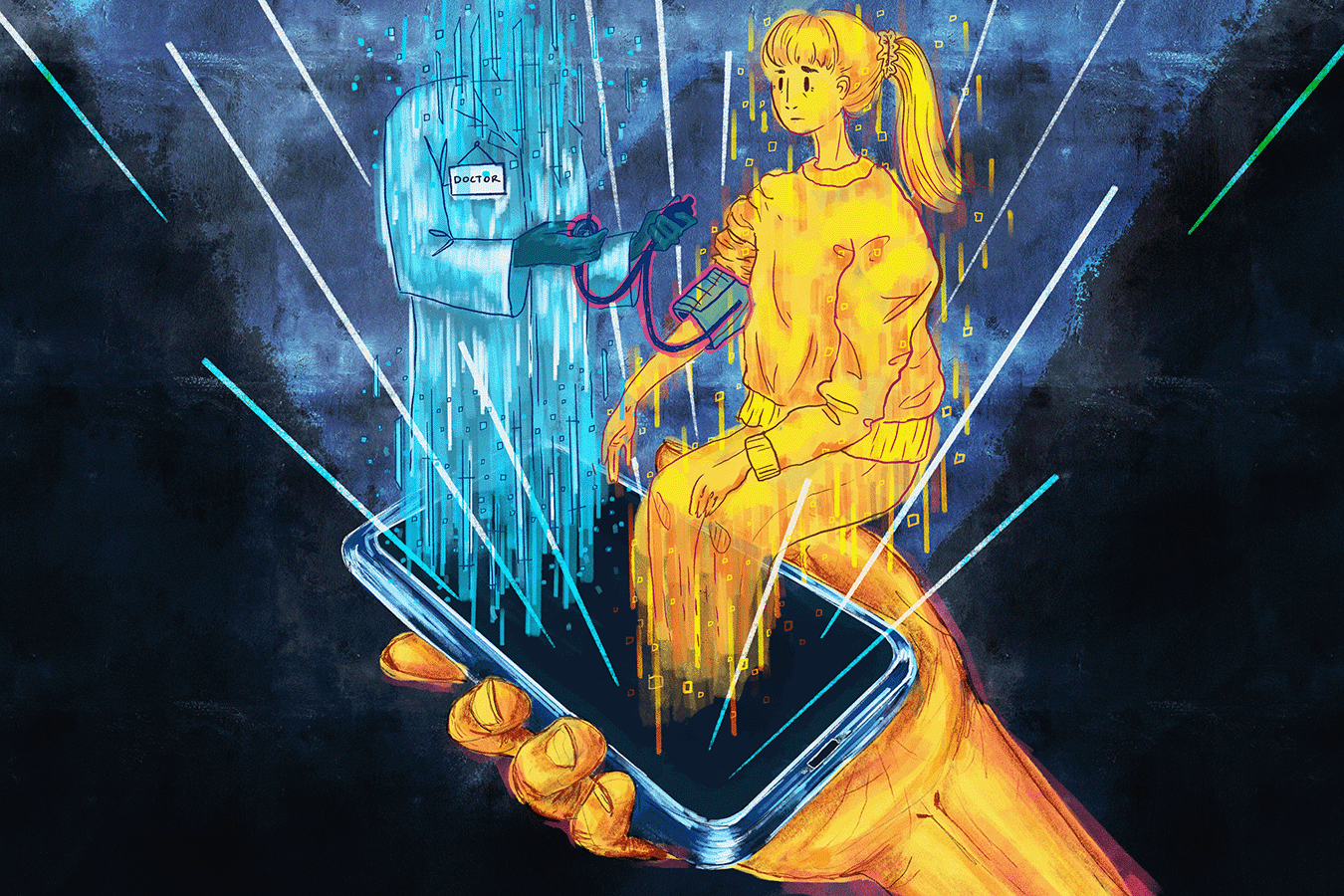
The very same units utilised to get selfies and sort out tweets are staying repurposed and commercialized for rapid accessibility to information and facts needed for checking a patient’s health. A fingertip pressed against a phone’s digital camera lens can evaluate a coronary heart level. The microphone, retained by the bedside, can monitor for snooze apnea. Even the speaker is staying tapped, to watch respiratory utilizing sonar engineering.
In the best of this new globe, the knowledge is conveyed remotely to a health care experienced for the convenience and ease and comfort of the affected individual or, in some conditions, to assist a clinician with out the require for pricey hardware.
But using smartphones as diagnostic applications is a get the job done in development, industry experts say. Despite the fact that medical professionals and their clients have identified some genuine-world achievements in deploying the mobile phone as a healthcare device, the all round probable stays unfulfilled and unsure.
Smartphones appear packed with sensors able of checking a patient’s essential indications. They can help assess individuals for concussions, observe for atrial fibrillation, and conduct mental well being wellness checks, to identify the works by using of a several nascent apps.
Organizations and scientists eager to find health care purposes for smartphone technologies are tapping into modern phones’ crafted-in cameras and light sensors microphones accelerometers, which detect system actions gyroscopes and even speakers. The apps then use synthetic intelligence software to review the gathered sights and sounds to generate an uncomplicated connection amongst clients and doctors. Earning prospective and marketability are evidenced by the extra than 350,000 electronic overall health products readily available in app outlets, according to a Grand See Analysis report.
“It’s quite difficult to place devices into the client residence or in the medical center, but all people is just going for walks all-around with a cellphone that has a network link,” explained Dr. Andrew Gostine, CEO of the sensor network enterprise Artisight. Most People in america have a smartphone, which include more than 60{33c86113bcc32821f63c6372852a0f501e07fff55ce3ce61b15b246c5f8c531c} of folks 65 and over, an improve from just 13{33c86113bcc32821f63c6372852a0f501e07fff55ce3ce61b15b246c5f8c531c} a ten years ago, according the Pew Research Middle. The covid-19 pandemic has also pushed individuals to develop into far more at ease with virtual treatment.
Some of these solutions have sought Food and drug administration clearance to be promoted as a medical machine. That way, if individuals should pay to use the software, overall health insurers are more most likely to protect at minimum component of the cost. Other products and solutions are selected as exempt from this regulatory approach, placed in the same medical classification as a Band-Assist. But how the agency handles AI and equipment studying-based healthcare gadgets is however currently being altered to replicate software’s adaptive character.
Making certain accuracy and medical validation is essential to securing obtain-in from wellness treatment companies. And quite a few instruments nonetheless will need high-quality-tuning, reported Dr. Eugene Yang, a professor of medicine at the College of Washington. Now, Yang is tests contactless measurement of blood tension, heart rate, and oxygen saturation gleaned remotely by using Zoom camera footage of a patient’s deal with.
Judging these new technologies is tricky simply because they depend on algorithms designed by machine learning and artificial intelligence to obtain facts, somewhat than the physical resources normally applied in hospitals. So scientists are not able to “compare apples to apples” with health care sector criteria, Yang reported. Failure to build in these assurances undermines the technology’s top aims of easing charges and entry because a physician continue to need to confirm benefits.
“False positives and false negatives direct to additional testing and more charge to the health care system,” he explained.
Huge tech companies like Google have intensely invested in exploring this type of technology, catering to clinicians and in-household caregivers, as perfectly as people. At the moment, in the Google Suit application, end users can verify their heart rate by putting their finger on the rear-dealing with camera lens or observe their respiratory amount utilizing the entrance-facing digicam.
“If you took the sensor out of the cellular phone and out of a scientific system, they are possibly the very same matter,” claimed Shwetak Patel, director of well being technologies at Google and a professor of electrical and computer engineering at the University of Washington.
Google’s investigation employs machine discovering and laptop or computer vision, a industry inside of AI primarily based on data from visual inputs like video clips or images. So as an alternative of employing a blood pressure cuff, for example, the algorithm can interpret slight visual improvements to the overall body that provide as proxies and biosignals for a patient’s blood tension, Patel mentioned.
Google is also investigating the usefulness of the constructed-in microphone for detecting heartbeats and murmurs and using the digital camera to protect vision by screening for diabetic eye ailment, according to information the business printed previous 12 months.
The tech giant not long ago purchased Sound Daily life Sciences, a Seattle startup with an Fda-cleared sonar know-how app. It makes use of a sensible device’s speaker to bounce inaudible pulses off a patient’s system to discover motion and keep an eye on breathing.
Binah.ai, primarily based in Israel, is a further company utilizing the smartphone digicam to calculate very important indications. Its software looks at the area all-around the eyes, exactly where the skin is a bit thinner, and analyzes the mild reflecting off blood vessels back again to the lens. The firm is wrapping up a U.S. clinical demo and advertising and marketing its wellness app immediately to insurers and other health and fitness providers, claimed enterprise spokesperson Mona Popilian-Yona.
The apps even arrive at into disciplines such as optometry and psychological well being:
- With the microphone, Canary Speech takes advantage of the very same underlying technological know-how as Amazon’s Alexa to examine patients’ voices for psychological overall health conditions. The software package can combine with telemedicine appointments and allow clinicians to display for panic and melancholy utilizing a library of vocal biomarkers and predictive analytics, mentioned Henry O’Connell, the company’s CEO.
- Australia-primarily based ResApp Wellbeing received Fda clearance past year for its Apple iphone application that screens for average to intense obstructive rest apnea by listening to breathing and snoring. SleepCheckRx, which will call for a prescription, is minimally invasive in contrast with slumber research at present utilized to diagnose slumber apnea. Those can value countless numbers of bucks and call for an array of tests.
- Brightlamp’s Reflex app is a medical selection help software for assisting deal with concussions and vision rehabilitation, amongst other things. Employing an iPad’s or iPhone’s digicam, the cellular application measures how a person’s pupils react to variations in mild. By way of equipment studying assessment, the imagery presents practitioners facts factors for analyzing clients. Brightlamp sells straight to wellbeing treatment vendors and is getting utilised in extra than 230 clinics. Clinicians pay out a $400 normal annual price per account, which is currently not covered by insurance coverage. The Section of Defense has an ongoing scientific demo working with Reflex.
In some instances, these kinds of as with the Reflex app, the facts is processed specifically on the phone — fairly than in the cloud, Brightlamp CEO Kurtis Sluss explained. By processing all the things on the product, the application avoids running into privacy troubles, as streaming information in other places involves patient consent.
But algorithms need to be experienced and analyzed by amassing reams of information, and that is an ongoing method.
Researchers, for example, have uncovered that some computer vision applications, like coronary heart fee or blood pressure monitoring, can be less precise for darker pores and skin. Experiments are underway to find improved remedies.
Modest algorithm glitches can also generate false alarms and frighten patients ample to retain widespread adoption out of get to. For instance, Apple’s new car-crash detection characteristic, out there on both the most current Apple iphone and Apple Look at, was established off when persons were being using roller coasters and immediately dialed 911.
“We’re not there yet,” Yang mentioned. “That’s the bottom line.”




More Stories
Durango church offers ambulatory medical equipment for lending – The Durango Herald
How Robotic Applications are Changing Medical Devices
Online tool analyzes at-home videos to predict musculoskeletal health